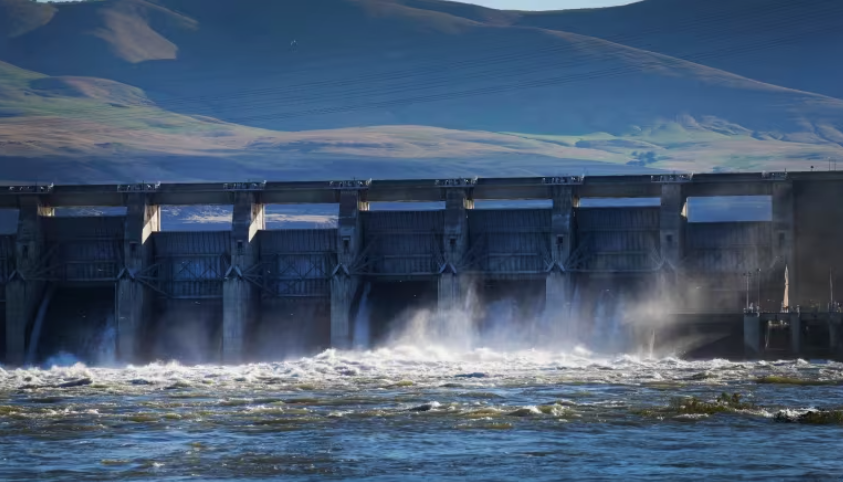For 10 days every summer, a group of Indigenous and non-Indigenous people launch their canoes each morning after a Haudenosaunee Thanksgiving Address and continue on their journey down the Grand River in southern Ontario. The annual Two Row on the Grand is not just any paddling trip — it's an enactment of the Two Row Wampum treaty, an agreement made more than 400 years ago between the Haudenosaunee people and Dutch settlers.
Money, power and an ecosystem are all at stake in Canada-U.S. negotiations over a massive river
Walk along the banks of the Columbia River in B.C. and you might be forgiven for thinking it's like any of the province's other big waterways. You might spot a sturgeon, or glimpse one of the more than 60 dams in the Columbia's watershed. But the Columbia is not like other rivers. For one, it crosses the U.S. border to empty into the Pacific in Oregon. The Columbia River basin is also a vital source of electricity, providing about 40 per cent of all U.S. hydroelectric power, while B.C. draws almost half of its total electrical generation from the region.
Tłı̨chǫ concerned after N.W.T. rejects Wek'eezhii's initial plan for Diavik reclamation
The Tłı̨chǫ Government expressed "concern" over the N.W.T's decision not to approve an application by Diavik Diamond Mine to begin a process of progressive reclamation. The Tłı̨chǫ raised its issue with the decision in a letter dated July 27, stating the problem is around jurisdiction. The letter was addressed to Shane Thompson, the minister of environment and natural resources, claiming he is ignoring the treaty by rejecting a recommendation by the Wek'èezhı̀ı Land and Water Board, the land management authority for the area created after the Tłı̨chǫ agreement.
Century-old treaty stops Alberta farmers from using Milk River for much of the summer
The Milk River looks great right now, according to farmer Elise Walker. It's high, it's flowing and it's fairly clean. For now, she and about 30 to 40 other families in southern Alberta can continue using the water to irrigate their farms, helping to get them through a very dry spring. In fact, Walker already started to irrigate her 607 hectares (1,500 acres) of land at the end of March — the earliest ever.
Our Precious Water: The Columbia River Treaty
Signed in 1961 and ratified in 1964, the Columbia River Treaty is a transboundary water management agreement between Canada and the United States. The treaty optimizes both flood management and power generation through co-ordinated operations of dams, rivers, and reservoirs on both sides of the border. What led to the treaty? In 1948, before there were any dams along the Columbia River, there was a disastrous flood that devastated the former city of Vanport, Oregon. The floodwaters completely destroyed the infrastructure and killed 15 people, when the 200-foot-long railroad berm holding back the river collapsed. As well as the growing demand for power in the Pacific Northwest on both sides of the border, the impetus for the Columbia River Treaty was the flood and the growing need for electricity.
Saving wetlands a resolution Canada needs to keep
Amid all the heartening and hope-filled ways Canadians have resolved to make 2021 a year of positive change, one in particular holds water: the commitment to saving our wetlands. Leading up to 2021, the Government of Canada promised to make significant investments in our environment-and in the wetlands that underpin its health. Today, this commitment must be among our greatest convictions. Our ability to address the colliding crises of biodiversity loss and climate change depend on it. So does our economic recovery.







